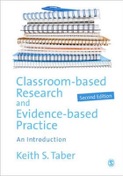Educational Research Methods

A site to support teaching and learning...

Randomisation
Randomisation is a process which is essential in some kinds of research design. Experimental research that leads to a calculation of the likelihood of the outcome (to be compared with the arbitrary cut-off where a result occurring by chance is considered ‘significant’) often relies on randomisation:
to randomly assign students to treatment groups
(or less powerfully)
to randomly assign groups to treatments
Sometimes when we select a sample form a population it is important (to apply statistical tests correctly) we have a random sample. This means that each person in the population has the same chance of being selected for the sample. (In other kinds of research, informed by different paradigmatic commitments, we would select our sample deliberately, and not wish to rely on chance).
How do we know a decision has been made randomly?
“Although the term ‘randomly’ is much used, we know that most people are not good at appreciating what ‘random’ really means, and expect random events to appear much more evenly spread than is often the case. ... This leads to a question of how a researcher selects participants for a study in a truly random way. When we read accounts that report ‘the teacher selected a student to interview at random’, we might wonder how they went about that.” (Taber, 2013a: 255).
To make a random selection we need a procedure such a tossing a coin or drawing lots, or using a table of random numbers. In quality research, the researcher reports how the randomisation was undertaken, but often these details are missing, and sometimes the description that is given does not seem consistent with a random choice.
“This makes one wonder whether articles in the educational research literature that make an unelaborated reference to random sampling or randomisation in quasi-experimental studies always do actually refer to a valid randomisation process rather than some form of convenience sampling or tacit application of an implicit sampling frame that the investigators considered random, or ‘as good as’ random, at the time. Such doubt can be avoided if when we write-up our research we always think to follow any claim about randomisation by a sentence of two explaining the technique we used to ensure that sampling or assignment to conditions was indeed random. Then readers of our work can know that ‘random’ means random, and not just that we asked the teacher who happened to be in the staffroom when we were getting a coffee.”
Taber, K. S. (2013b). Non-random thoughts about research. Chemistry Education Research and Practice, 14(4), 359-362. doi:10.1039/c3rp90009f
There is a simple criterion for deciding whether a process is genuinely randomisation.
This is a personal site of Keith S. Taber to support teaching of educational research methods.
(Dr Keith Taber is Professor of Science Education at the University of Cambridge.)
2015
Taber, K. S. (2013a). Classroom-based Research and Evidence-based Practice: An introduction (2nd ed.). London: Sage.
